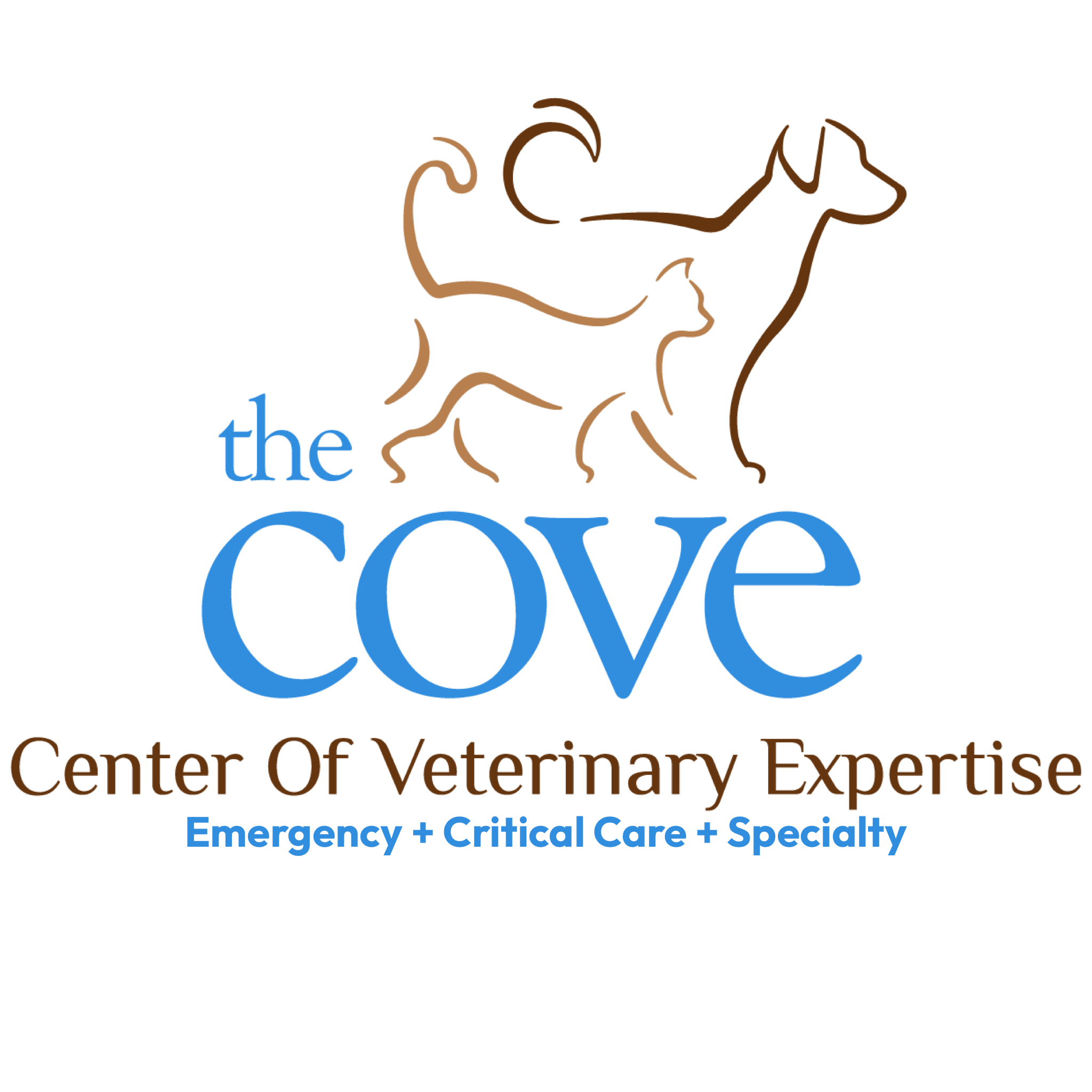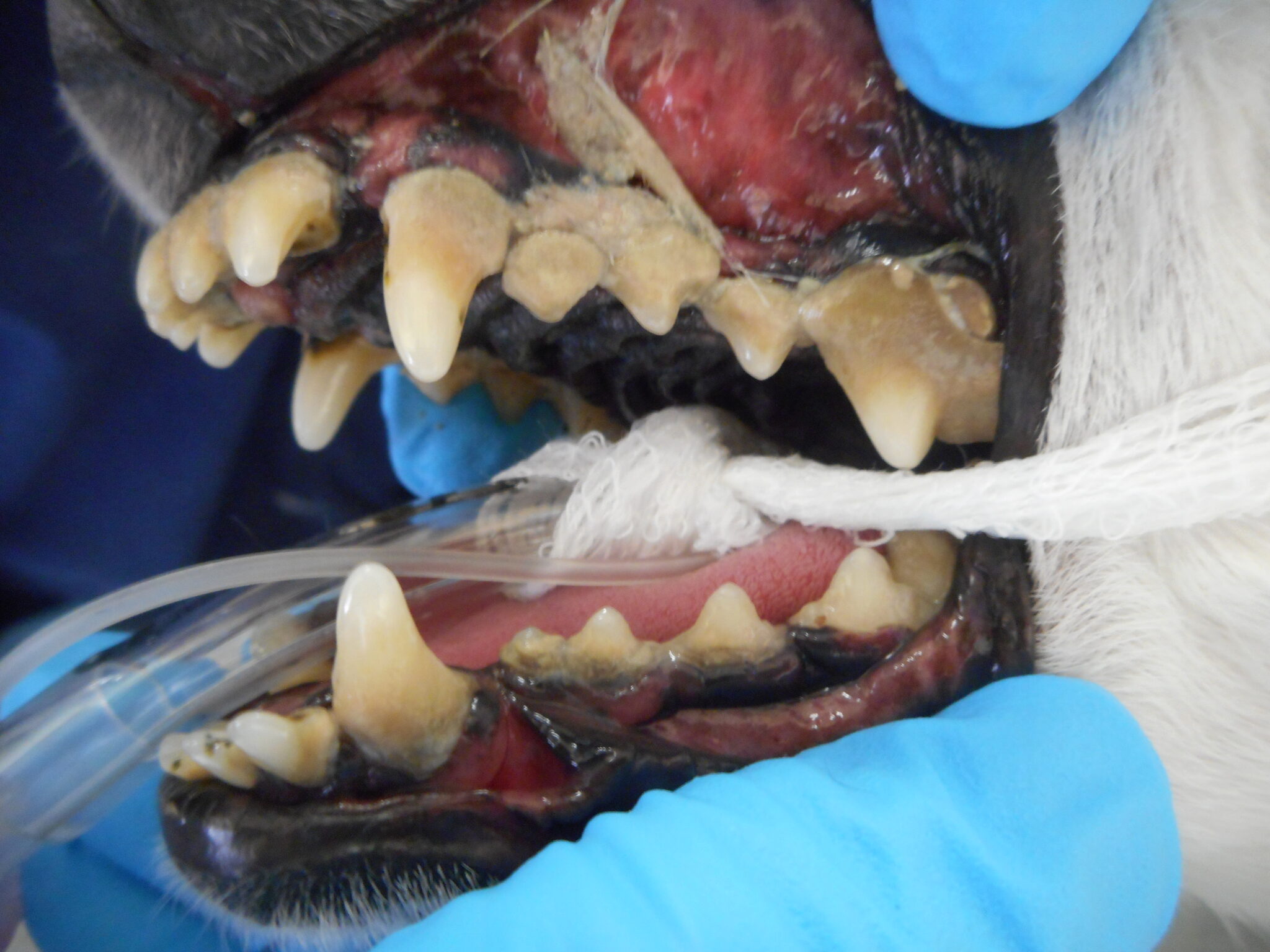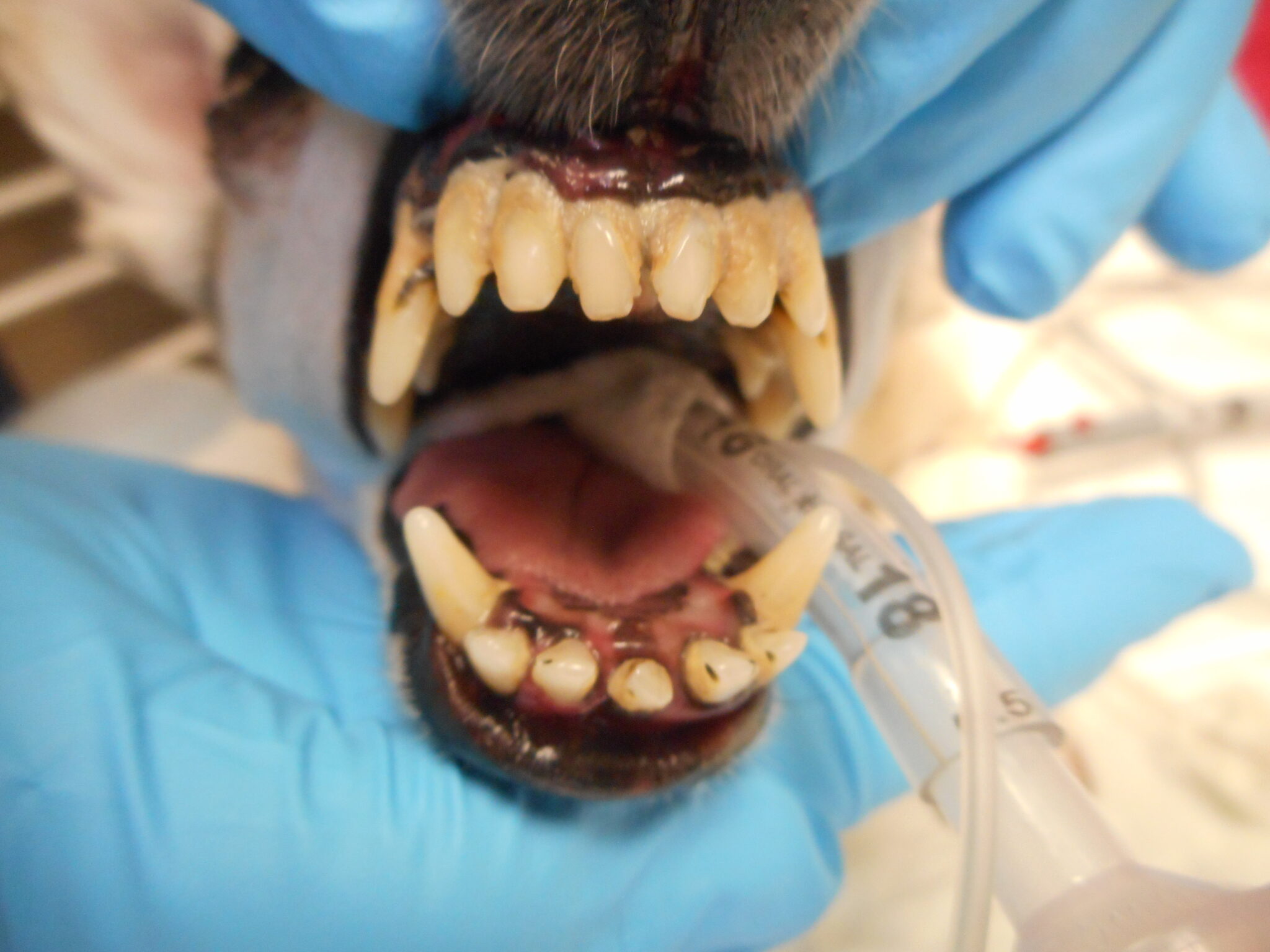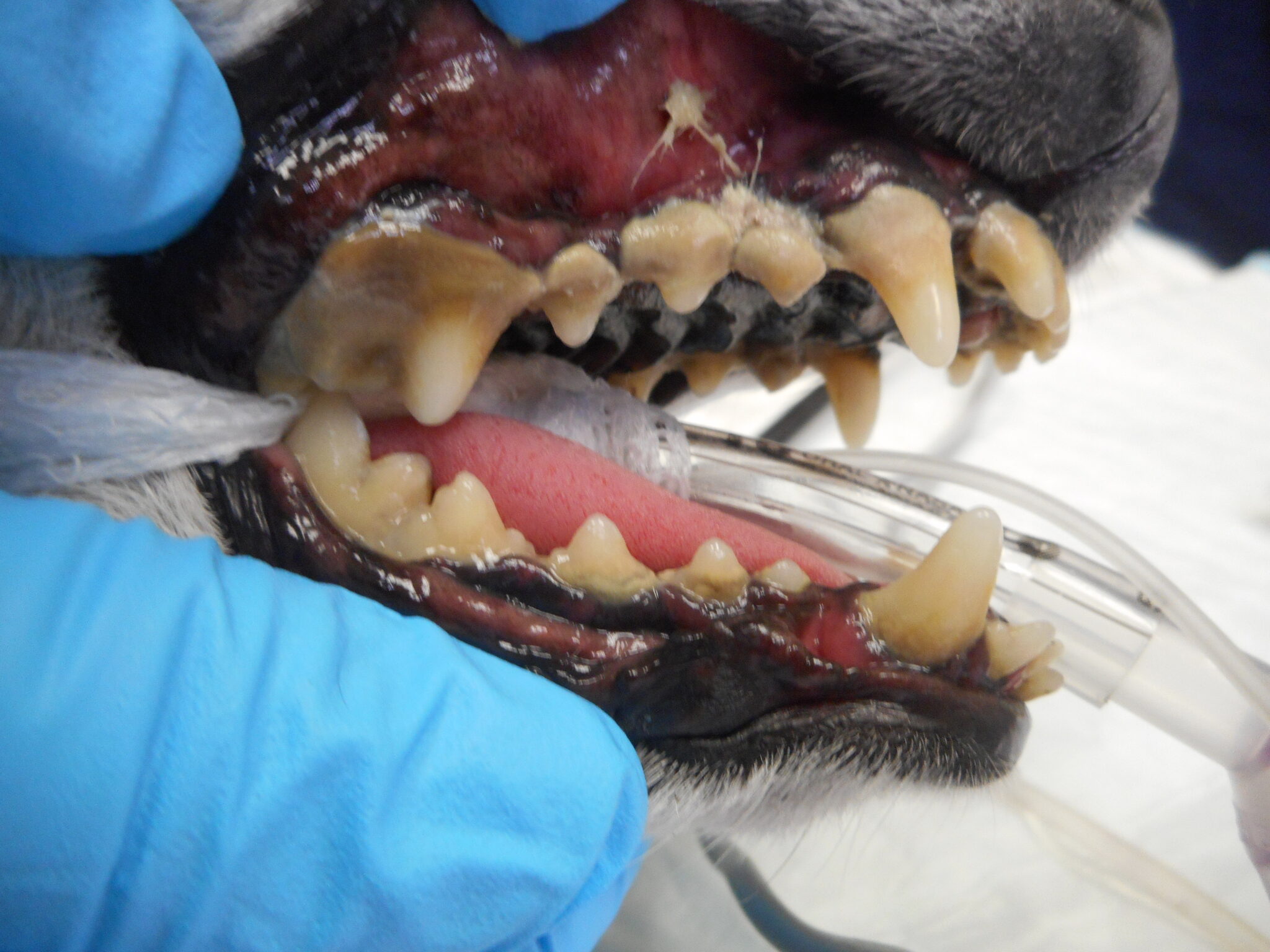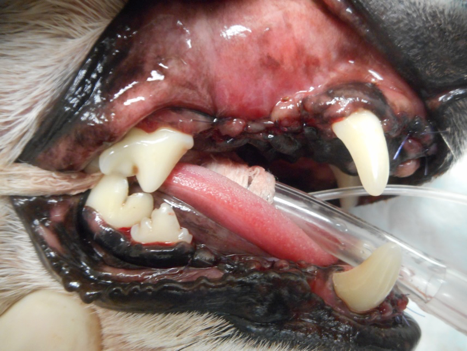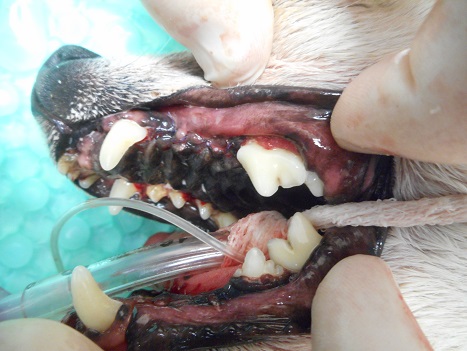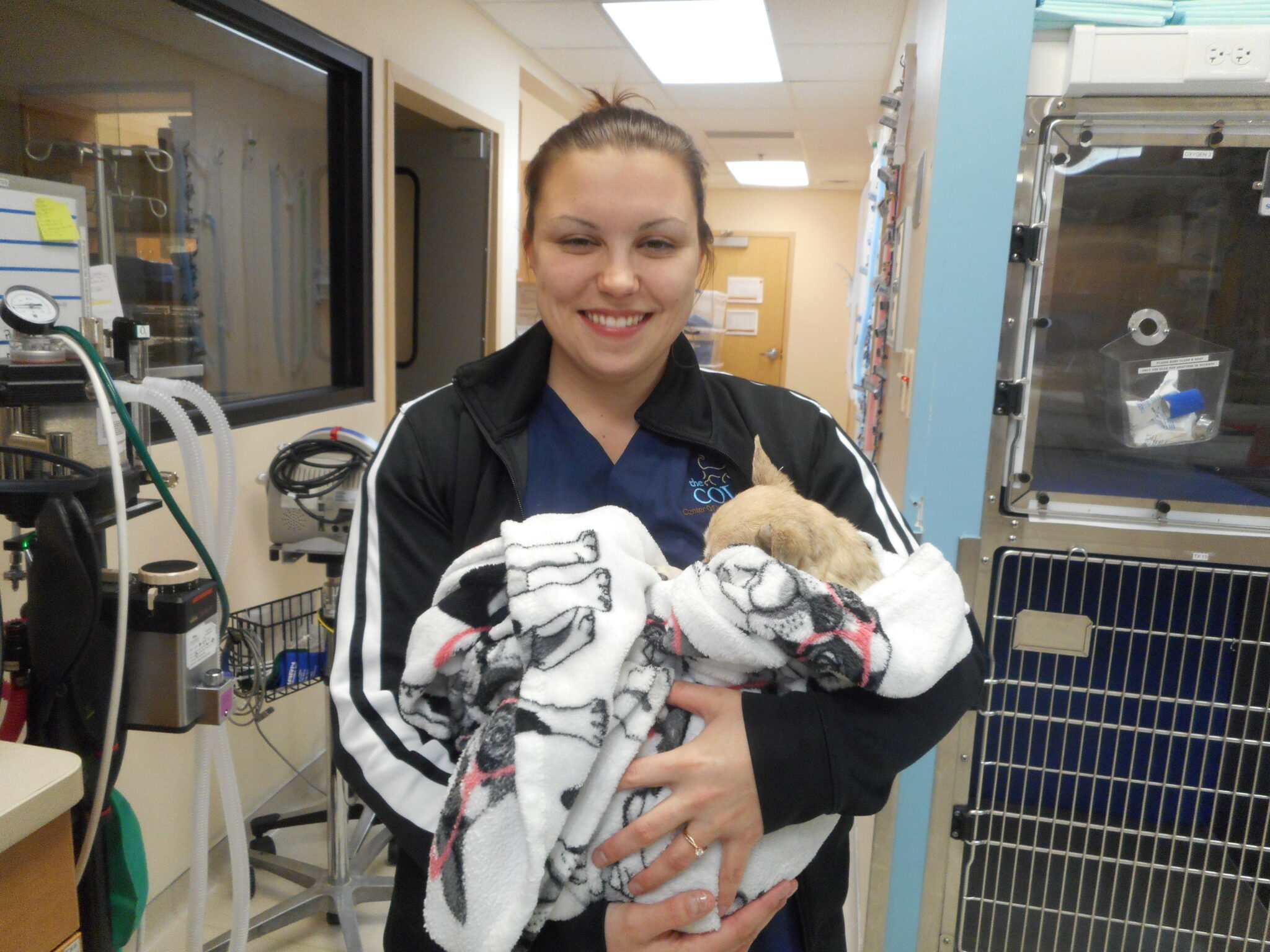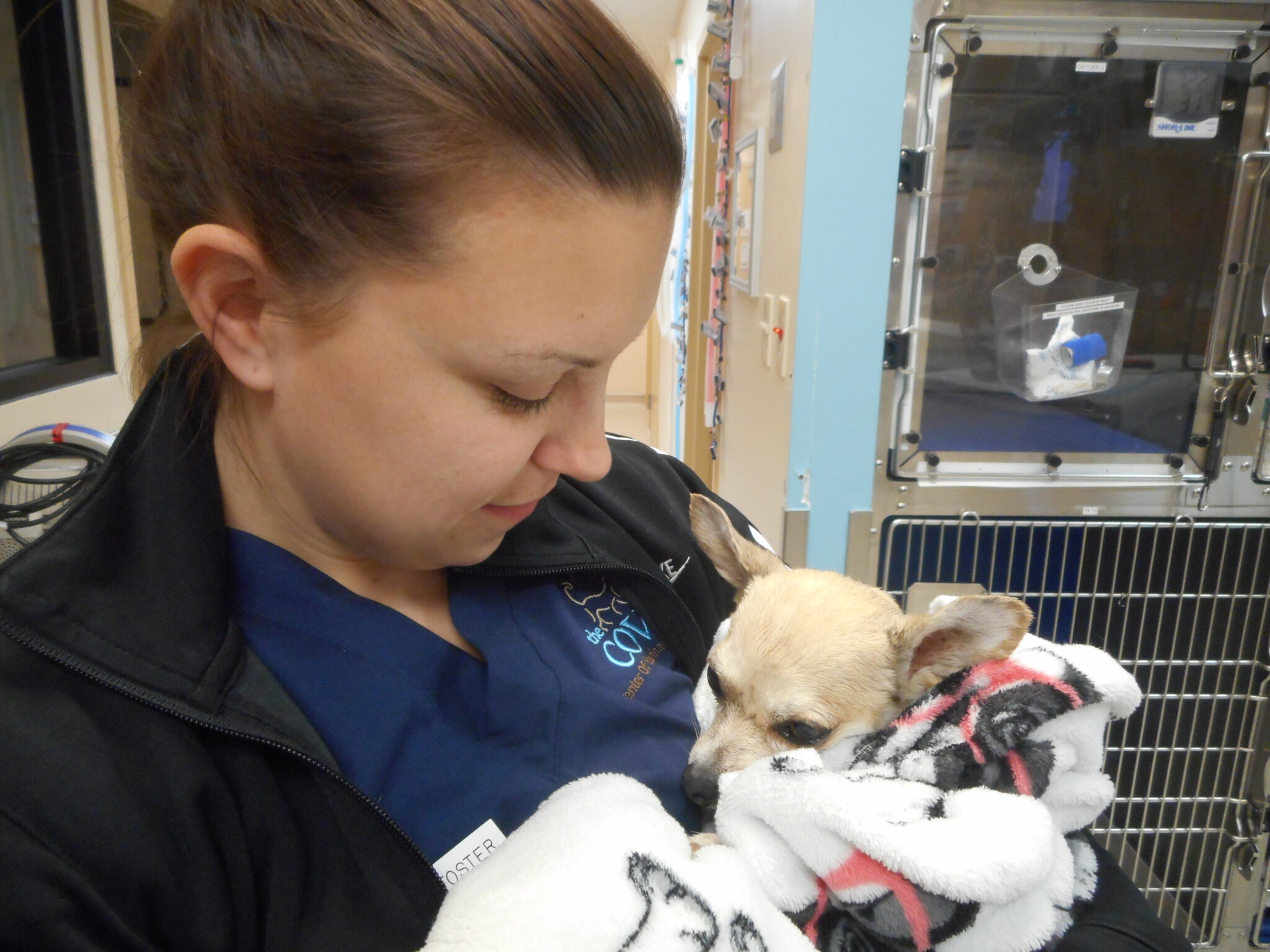By Danielle Martin, LVT
Did you know that by age three, according to the American Veterinary Dental Society, 80% of dogs and 70% of cats will develop some stage of oral disease? February is National Pet Dental Health Month. In honor of that, we would like to highlight a recent dental procedure done here at The COVE on one of our team member’s dog, Chula.
Chula is an 8-year-old Chihuahua that never had her teeth cleaned. Her owner, Ms. Foster, was always worried about anesthesia for her little one and therefore never pursued an anesthetized dental procedure until she joined Team COVE. Here, she learned how safe anesthesia could be when highly trained professionals, customized anesthetic protocols, and state of the art equipment are used.
As a first step, Ms. Foster had a consultation with Colleen Fox, DVM, our veterinarian with extensive experience and training in dentistry. Dr. Fox recommended a personalized plan for Chula that included a comprehensive exam, dental radiographs, and multiple extractions. Chula was then scheduled for her procedure by the dental technician.
On her appointment day, Chula was admitted and was found to be slightly dehydrated. Intravenous fluids were administered to prepare her for her procedure that afternoon. Once she was well hydrated, she was brought into the dentistry suite to begin the pre-operative process. She was hooked up to an EKG monitor, a blood pressure monitor, and an oxygen saturation monitor. When the team and Chula were ready, Ms. Foster was contacted to let her know they were about to start Chula’s procedure. Chula was anesthetized utilizing her personalized anesthetic plan. As anesthesia can decrease the body temperature, she was warmed intra-operatively with a heated operation table, a heated water-circulating blanket, and a warm air blanket. Her end-tidal carbon dioxide levels and temperature were also monitored throughout the process.
Here are Chula’s “before” pictures:
- Cove Chula Before 1
- Cove Chula Before 2
- Cove Chula Before
After radiographs were taken and a thorough examination of each tooth was performed, Dr. Fox shared her recommendations for a treatment plan with Chula’s owner. Ms. Foster consented to the plan, which included a significant number of extractions…a total of 23 – yes 23 teeth needed to be removed! This seems like an extreme number, but dogs normally start with 42 teeth. Those that needed to be removed were infected and causing her pain. Following the extractions, her teeth were given a professional cleaning and polishing by a licensed technician. She recovered for about four hours at The COVE with the intensive care team and was sent home that afternoon.
Here are her “after” photos:
- Cove Chula After
- Cove Chula After Photo
Chula ate soft food for two weeks while the extraction sites healed. We used absorbable sutures so when she came back for her recheck with Dr. Fox, no sutures needed to be removed. Chula then returned to her normal diet, hard kibble!
Ms. Foster was sent home with a “home care kit” consisting of toothpaste, a toothbrush, samples of dog biscuits, and soft rawhides approved by the Veterinary Oral Health Council. Ms. Foster was taught how to brush Chula’s teeth, which is her best chance at preserving the health of the remaining teeth. She will still require annual, anesthetized, professional oral health assessment and treatment, but our goal is to prevent as many future extractions as we can. If brushing is not an option, and alternative treatments are not working, Chula may require procedures every 6 months instead of annually.
- Cove Chula
- Cove Chula 2
This is Chula, with her mom. Ms. Foster is one of our client liaisons and would love to share her experience with anyone who is concerned about having dental work with anesthesia performed on their pet. You may reach her here at The COVE at (757) 935-9111.
Most of us don’t think about our pet’s teeth, but the truth is that dental disease is more common in dogs and cats than it is in humans. This disease can be a frequent source of pain and often leads to poor general health, including liver, kidney and heart disorders. If your pet is experiencing symptoms of dental issues, including bad breath, red, swollen, or bleeding gums, difficulty eating, lack of appetite, loose or broken teeth, excessive drooling, lumps or bumps in their mouth, tartar buildup, and/or chewing on only one side of the mouth, please contact your primary care veterinarian for an exam. Should advanced dental care be needed, count on Dr. Fox and our dental team here at The COVE to be with you every step of the way.
About Us
The COVE’s veterinarians and staff wholeheartedly embrace the core values of community, collaboration, commitment, compassion, and integrity. This focus ensures that pets, the people who love them, and their primary care veterinarians have as positive and affirming a healthcare experience as possible, regardless of the circumstances that bring us all together.
